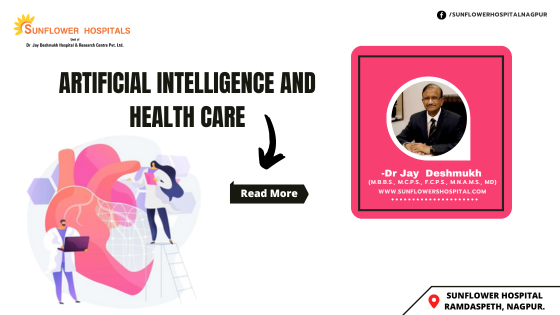How does Al help to diagnose disease?
Many years of medical training are spent to increase and improve clinical acumen to be able to diagnose a medical condition. It certainly is a difficult job in many instances. This puts the patients and the doctors under severe strain. Deep learning algorithms have made huge advances in automatically diagnosing diseases, which makes diagnosis far cheaper and more rapid.
How do machines learn to diagnose?
Data of patterns of illnesses is stored in the computer, A specific pattern of illness is thus formulated. These patterns are digitalized. So, machine learning by way of dig-utilisations helps to diagnose a medical condition. Thus, detecting strokes or lung cancers is done by AI with data from CT scans being stored. The risk of sudden cardiac death or other heart diseases is based on ECGs and Cardiac MRI reports. Skin diseases can be classified by skin images. Eye images are stored to diagnose diabetics with retinopathy. Algorithms are becoming as good as experts in diagnosing these conditions.
What are the more advanced Al diagnostics?
The application of machine learning in diagnostics is just the beginning. A combination of various data from CT, MRI, genomics, and proteomics and even handwritten notes are helpful in assessing a disease, or it’s progression.
Can Al replace doctors?
This may not happen so soon. AI systems are likely to be used to potentially diagnose malignant lesions or dangerous cardiac patterns by experts. The doctor is likely to focus on these signals.
Can Al be used to develop a new drug?
Presently, it takes many years or even a few decades to develop a new drug. The investment required goes into mil-Artificial intelligence is the new buzz in the medical field. All in medicine learns from the enormous data stored, detects some patterns of disorders, and helps the medical fraternity to diagnose disease in its early stages. All in medicine has incredible potential. All in medicine will change the conventional approach in the next few years. In computer science, Al is known as machine intelligence in contrast to the natural intelligence displayed by humans. Al is used to describing machines that mimic cognitive functions like learning and problem-solving.
Lions. Many of the analytical processes involved in drug development can reduce the cost and time to develop a new drug. AI has already been used with success in identifying targets for intervention, discovering drug candidates, speeding up clinical trials, and finding biomarkers for diagnosing the disease.
Can Al lead to better personalized treatment?
As we know, different individuals respond to different drugs in different ways. Personalised treatment may help to increase the effectiveness of the treatment. Machine learning can automate the complicated process and can identify the right therapies for individuals based on their personal characteristics. AI can also help enormously to edit genes.
What are the main benefits of Al in health care?
The main benefits are better data-driven decisions. AI detects disease in its early stages. It also helps in surgery and also post-surgical support. It supports mental health and saves money and energy. It helps to give good care to very remote areas of the country.
What about Al- robot-assisted surgery?
Robots have been used in medicine for more than 30 years. Surgical robots can either aid a human surgeon or execute operations by themselves. They are also used in hospitals for repetitive tasks and physical therapy. Advances in AI in health care can assist human thoughts, human power, and human resources effectively and efficiently. AI could mean a lot of power in the hands of a few who would be controlling it. AI has no ability to make a judgment call. But as we accepted computers, digitalization, and dependency on the Internet, eventually AI will be employed to bring about another revolution in the health sector!

